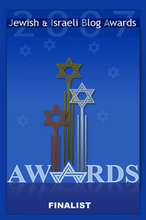skip to main |
skip to sidebar
[RSS] Sapphire Magen David [RSS] Torah Down Under [RSS] Geshmack Torah [RSS] Divrei Chaim [RSS] Musings of a Litvishe Yid - בס"ד [RSS] OnScript [RSS] Beis Vaad L'Chachamim [RSS] parshablog [RSS] Havolim [RSS] נוטריקון [RSS] Ohr Somayach - What's in a Word? [RSS] Musings of a Jewish Bookseller [RSS] Sasson Magazine [RSS] Geshmack Torah [RSS] כבוד התורה [RSS] HebrewBooks.org Official Blog [RSS] OnScript [RSS] The Rachack Review [RSS] Reb Chaim HaQoton [RSS] TORAH AND CLASSICAL HEBREW [RSS] YGB - יג"ב [RSS] TREASURES OF ASHKENAZ [RSS] Our Mesorah and the Development of Torah she be’al Peh [RSS] Realia Judaica [RSS] Avraham Ben Yehuda [RSS] Torah Discoveries » Feed [RSS] Jewish Ethical Wisdom [RSS] Revach L'Neshama [RSS] Blog: Science in the Talmud [RSS] A Jew in the Rain [RSS] בין דין לדין [RSS] Biblical Hebrew Etymology [RSS] תולדות ושורשים בעם ישראל [RSS] Aspaqlaria [RSS] Reporting on the Middle East, Science, and Education [RSS] TheGemara.com [RSS] עם הספר [RSS] The Temple Mount Sifting Project [RSS] OnScript [RSS] Zeramim » Feed [RSS] גילוי מילתא בעלמא Giluy Milta B'alma [RSS] The Talmud Blog [RSS] My Obiter Dicta [RSS] JHI Blog [RSS] Ohr Somayach - What's in a Word? [RSS] Elyonim veTachtonim - RSS [RSS] גילוי מילתא בעלמא Giluy Milta B'alma [RSS] News – Biblical Archaeology Society [RSS] HaMapah [RSS] the Seforim blog [RSS] TheTorah.com [RSS] Toledot Yisrael [RSS] HebrewBooks.org Official Blog [RSS] The Book of Doctrines and Opinions: [RSS] OnScript [RSS] Jewish History [RSS] Prof. Lawrence H. Schiffman [RSS] The Jewish History Channel [RSS] Balashon - Hebrew Language Detective [RSS] Our Mesorah and the Development of Torah she be’al Peh [RSS] Michael L. Satlow [RSS] Torah Discoveries » Feed [RSS] The Temple Mount Sifting Project [RSS] On the Main Line [RSS] Mosaic Magazine [RSS] Rollston Epigraphy [RSS] Spengler [RSS] Torah Explorer [RSS] Rare View [RSS] Sultan Knish [RSS] Yeshiva World News [RSS] Temple Mount [RSS] Beth Din of America [RSS] Dew of your Youth » Feed [RSS] Henry Abramson [RSS] Beis HaMidrash of Torah Im Derech Eretz [RSS] Hirhurim - Torah Musings [RSS] The Lehrhaus [RSS] Yomin D'min Alma יוֹמִין דְּמִן עָלְמָא [RSS] OnScript [RSS] Torah Book Reviews [RSS] Hyehudi.org [RSS] OnScript [RSS] Miriam Kosman » Feed [RSS] Cross-Currents [RSS] Rabbi Dr. Dovid Gottlieb [RSS] Rationalist Judaism [RSS] Circus Tent - הירשל ציג'ס בלאג [RSS] Our Mesorah and the Development of Torah she be’al Peh [RSS] Torah Discoveries » Feed [RSS] Novel Formulations [RSS] Ohr Somayach - What's in a Word? [RSS] OLAMI Resources [RSS] Our Mesorah and the Development of Torah she be’al Peh [RSS] Foreigncy [RSS] The Tikvah Podcast [RSS] Torah Discoveries » Feed [RSS] OnScript [RSS] Holy Madness [RSS] OnScript [RSS] Temple Mount sifting [RSS] Mosaica Press » Feed [RSS] Kinaʻani [RSS] Mechaneches
The other Reb Chaim.
Blog Links with RSS Feeds
Links
Amazon Author: Rabbi Reuven Chaim Klein
God Versus gods: Maimonides And The Struggle Against Idolatry : Rabbi Reuven Chaim Klein
Jewish Game of Conquest on Apple Podcasts
Jewish Marriage by Rabbi Reuven Chaim Klein on Apple Podcasts
Klein Family Genealogical Webpage
Lectures and Shiurim by Rabbi Reuven Chaim Klein
Rabbi Reuven Chaim Klein | Mosaica Press
Rabbi Reuven Chaim Klein | The Jewish Press - JewishPress.com
Rabbi Reuven Chaim Klein, Beitar Illit, Israel - Gravatar Profile
Reb Chaim HaQoton- ר' חיים הקטן
Reuven Chaim (Rudolph "Rudy") Klein | LinkedIn
Reuven Chaim (Rudolph) Klein - Google Scholar Citations
Reuven Chaim Klein - YouTube Channel
Reuven Chaim Klein (0000-0001-9317-3282) - ORCID
Reuven Chaim Klein (Author of Lashon HaKodesh) | Goodreads
Reuven Chaim Klein | Times of Israel Journalist | Muck Rack
Reuven Chaim Klein | Yeshivas Mir - Academia.edu
Reuven Chaim Klein, at Times of Israel Blogs
Shiurim on Pirkei DeRabbi Eliezer by Rabbi Reuven Chaim Klein
The Book of Judges UNCENSORED on Apple Podcasts
The Jewish Game of Thrones on Apple Podcasts
What's in a word? - Google Groups
What's in a Word? « Ohr Somayach
Geni - Rabbi Reuven Chaim Klein
Shiurim on Pirkei DeRabbi Eliezer by Rabbi Reuven Chaim Klein on Apple Podcasts


 orcid.org/0000-0001-9317-3282
orcid.org/0000-0001-9317-3282

No comments:
Post a Comment